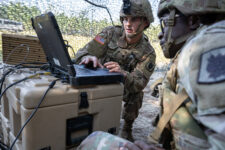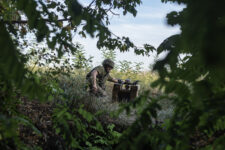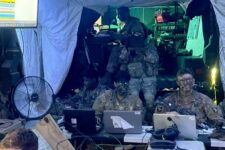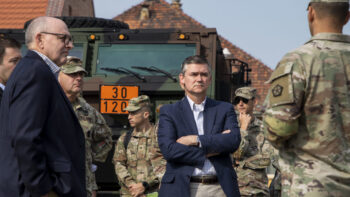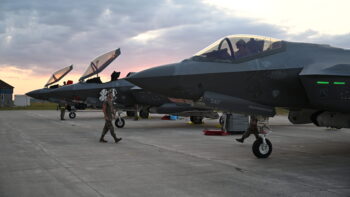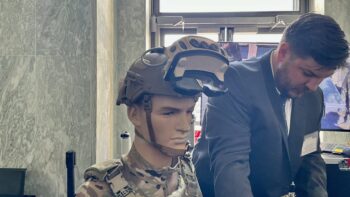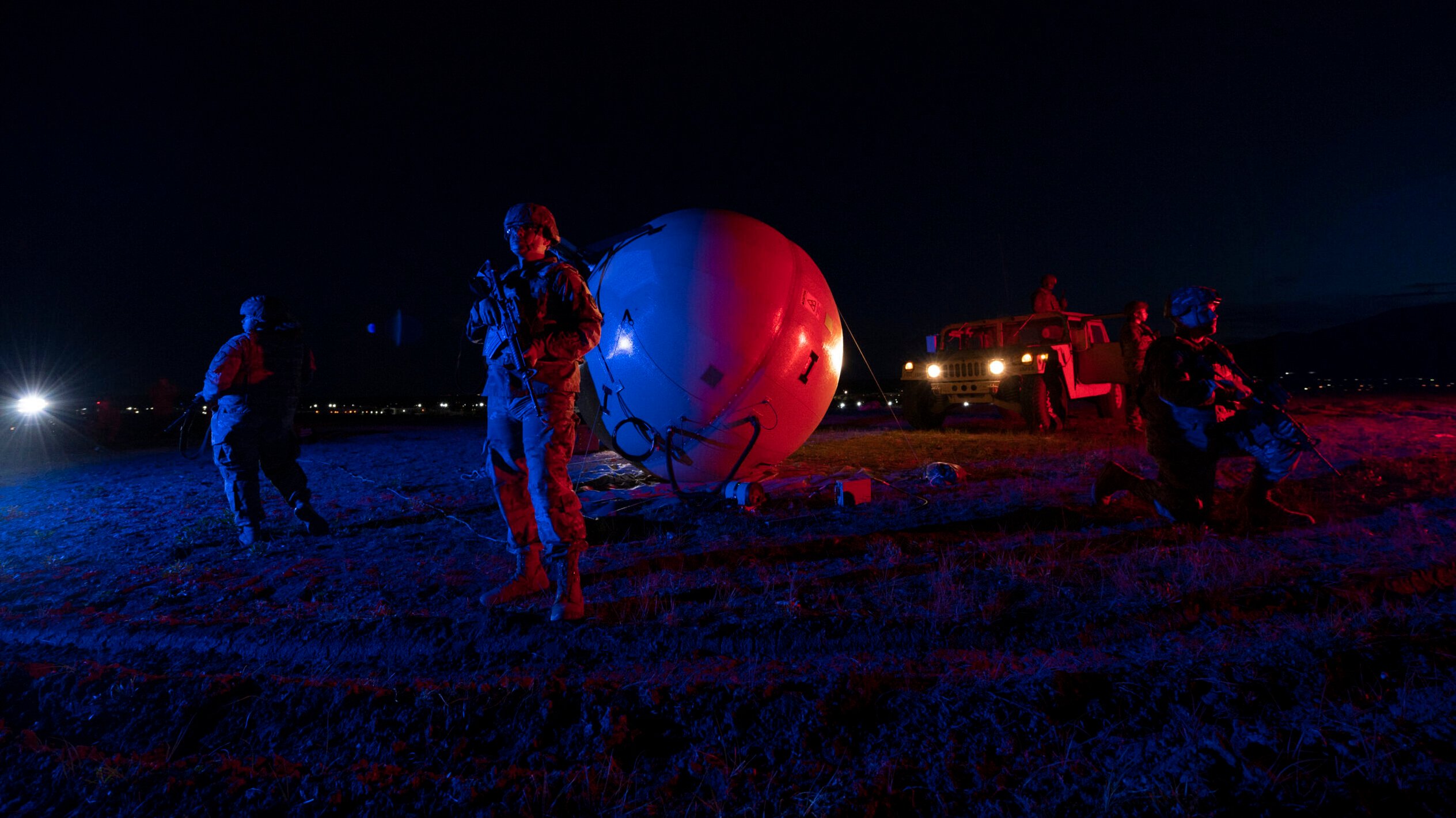
U.S. Army Soldiers assigned to the 1st Space Brigade on Fort Carson, Colorado Springs, Colorado conduct a training exercise sweep of their assigned area on May 25, 2021. (Photo by Staff Sg.t Dennis Hoffman).
AFCEA TECHNET AUGUSTA — The Army official in charge of the service’s just-unveiled cyber and space office sees opportunities to streamline previously complicated, overlapping lines of effort, he told Breaking Defense in an exclusive interview.
Christopher Green officially became the first project management officer for cyber and space in July. The new unit, focused on cyber, information warfare and tactical space missions, will reside within the program executive office for intelligence, electronic warfare and sensors (PEO IEW&S).
In his role, Green will report directly to Brig. Gen. Ed Barker, who spearheads PEO IEW&S. Barker told Breaking Defense this week that the Army saw the demand signal for the new office “a couple of years ago” and it’s continuing to grow by the quick, changing pace of the threat landscape emanating from foreign adversaries like China.
“At the time, those capabilities and the organization’s network were nested within the electronic warfare and cyber [project management office] that we had,” Barker said. “And obviously when you coupled the demand signals in the EW side and the demand signals in the cyber side, it was going to be a pretty significant lift, right? And so we were kind of worried about the span and control and the ability to be able to make those two really important areas with a high demand signal.”
The job, Green said in his first interview since being announced for the new role, was simply too big and multifaceted for how it was set up.
“Before [the office] was stood up, we had a lieutenant colonel who ran our product manager information warfare, and this individual not only did the execution, the cost, schedule and performance of his mission, but he also did a lot of the strategic collaboration of our partners,” Green said on Wednesday. “And so there was a lot of, I don’t want to use the word distraction, but there were a lot of activities that took this individual’s time away from execution.”
A lot of the programs the office will inherit are existing efforts within the service, like the Rapid Cyber Development Network (RCDN), that will continue to iterate over time. Green said the Army is now working with its acquisition arm to extend the unclassified version of the RCDN to industry partners to accelerate its development.
“So the RCDN-U is the development environment where…industry partners, their developers can build tools, can build software capabilities, that then can be used by cyber warriors inside the DoD to make cyber effect software,” he said. “So by extending RCDN-U…to their sites, it drastically improves development time.”
He said that the office will regularly conduct internal assessments to mark progress and uncover needed changes, while also maintaining a dialogue between its stakeholders from both the Army and US Cyber Command (USCYBERCOM) to better support their activities.
“And we have two major areas where we are the joint provider: [Joint Common Access Platform]…as well as our…[top secret] version of the Joint Development Environment, JDE, for USCYBERCOM,” Green said. “So we definitely want to strengthen those relationships there as well as retain the relationships that we have…And it’s my job to make sure that we strengthen those.”
A priority at the top of Green’s list is talent recruitment and retainment over the next year, a “multi-pronged effort,” he said.
“It’s a never-ending struggle to try to get talent, especially when you’re in certain areas like the Fort Meade area,” he said. “I think our focus right now is we have to grow fast…And that’s done through good hiring actions…it’s also the retention of employees that we have. I want to make sure we build a culture where people want to come to work everyday, they want to stay with us and they want to help us build our capabilities.”


